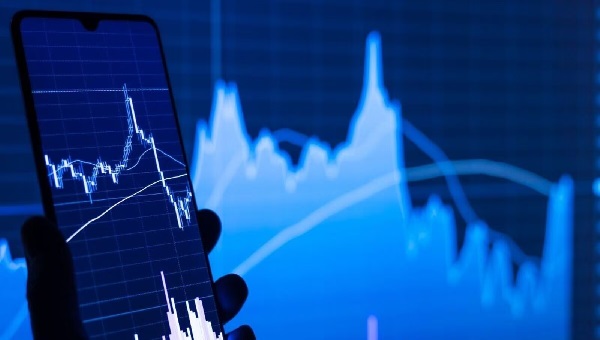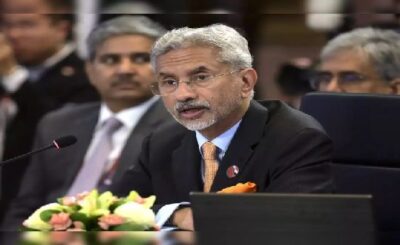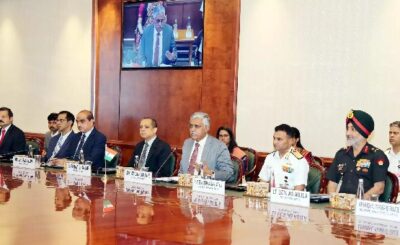-: R Muthu Kumar :-
India’s economic growth continues to surge, underpinned by a mix of factors driving its dynamic expansion and has reported robust economic growth, ending 2023 on a high note and providing a boost to Prime Minister Narendra Modi just weeks before an election that could give him a third term in office.
A sustained expansion will rapidly push India up the rankings of the world’s biggest economies. Analysts at Jefferies expect the country to become the world’s third-largest economy by 2027, up from fifth currently. The government has, however, set a higher goal of becoming a ‘developed country’ by 2047. With the journey of reforms continuing, this goal is achievable.
India’s stock markets hit new all time high on the closing bell last week on Thursday, and in all probability the sensex is sure to cross the 75k mark in couple of days. This 75,000 levels is an landmark which we missed in 2023 itself, but the present growth momentum is solid and encouraging.
Let’s be reminded that India has been a key growth engine for the world, contributing 16% to the global growth in 2023. The country’s growth rate of 7.2% in fiscal 2022-2023 was the second-highest among the G20 countries and almost twice the average for emerging market economies that year.
India’s efforts to maintain stability and enact structural reforms have contributed to its economic resilience in the face of global challenges. Investments in upgrading infrastructure and connectivity, including projects like the Bharatmala highway programme, the Sagarmala project for port-led development and the Smart Cities Mission, are transforming the country’s landscape and playing a pivotal role in the country’s economic advancement.
India began laying a solid foundation for a more digital economy over a decade ago with the launch of its national identification programme, Aadhaar, which uses biometric IDs to establish proof of residence. Today, with a burgeoning tech industry, the country has become a key centre for innovation and technology services, not only boosting economic growth but also positioning India as a key player in shaping the future of the digital economy.
Gross domestic product (GDP) in the world’s fastest growing major economy surged 8.4% in the final three months of 2023 compared with a year prior, up from growth of 7.6% in the June-to-September period survey statistics reveal.
India is also widely seen as an alternative to China for countries and companies looking to diversify their supply chains, particularly as the relationship between Washington and Beijing sours.
Some of the world’s biggest companies, including Apple’s supplier Foxconn, are already expanding their operations there. And Tesla (TSLA) CEO Elon Musk said last June that his company was looking to invest in India “as soon as humanly possible.”
Modi government approved an investment of over $15 billion for the construction of three semiconductor plants by firms including the Tata Group, marking a major step towards its goal of making India an electronic manufacturing hub.
The factories are expected to create 20,000 advanced technology jobs and about 60,000 jobs in the wider community, the government said in a statement. It said the investment was a “giant leap” for India’s semiconductor ambitions.
According to a report Wednesday from real estate consultancy Knight Frank, the number of ultra-rich Indians, those with a net worth of at least $30 million, will rise 50% over the five years to 2028, the biggest increase globally.
Despite the euphoria surrounding the latest growth figures, economists are advising caution.
“All that glitters is not growth,” Nomura wrote in a note on Friday. “Underlying growth is weaker than what the headline suggests.”
It added that consumption continues to lag and the agriculture sector, which contributes 16% to India’s GDP and is a major source of employment, has under performed.
Future-proofing our food system is one of the biggest systemic challenges we face.
Modi’s initiatives like “Make in India” and economic reforms aimed at ease of doing business have bolstered investor confidence, attracting foreign direct investment. Despite challenges like infrastructure deficits and socio-economic disparities, India’s trajectory toward becoming a global economic powerhouse remains steadfast, promising a bright future ahead.
Climate concerns
India faces pressing climate concerns amidst its remarkable economic growth trajectory. Rapid industrialization, urbanization, and population expansion contribute to escalating carbon emissions, exacerbating global warming and its adverse impacts.
India has also launched the International Solar Alliance and the Coalition for Disaster Resilient Infrastructure, and proposed a global grid for renewables. A major announcement made by Prime Minister Modi at COP28 in Dubai was the introduction of the Green Credit Initiative as a substitute for carbon credits.
In the face of escalating climate-related concerns, India also plays a key leadership role in the global fight against climate change. Through the launch of the Mission LiFE of Lifestyle for Environment, coupled with a concerted push for Green Hydrogen, India has demonstrated a firm commitment to a growth trajectory that balances economic advancement with ecological responsibility.








